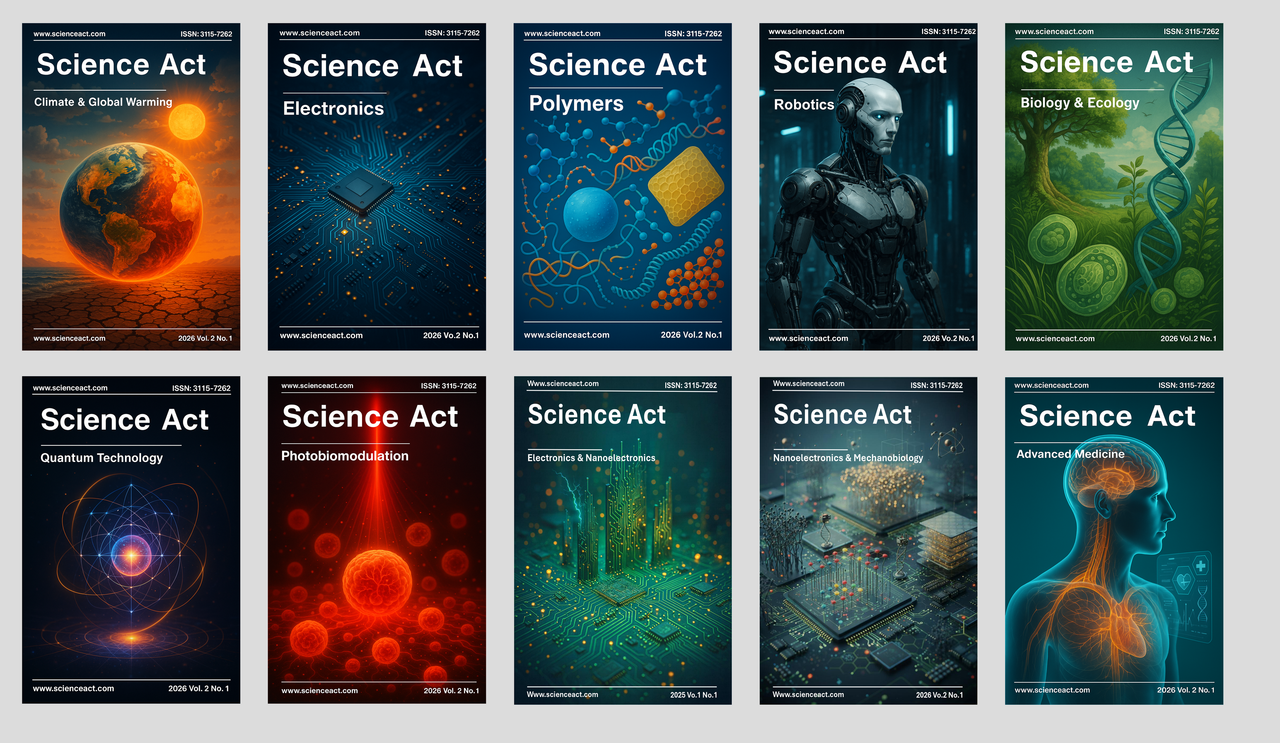Guide for Reviewers
Peer Review Guide for Reviewers – Science Act Journal
Purpose of Peer Review
At Science Act, peer review is a critical mechanism to ensure the integrity, originality, and scholarly merit of all manuscripts prior to publication. Reviewers are entrusted with providing objective, confidential, and constructive assessments to help editors decide on publication and to guide authors in improving their work.
Reviewer Responsibilities
Before accepting the review assignment:
-
Confirm that the manuscript is within your area of expertise
-
Declare any conflict of interest
-
Ensure you can complete the review within 10 days of invitation
Structure of the Review Report
1. Summary of the Manuscript (Optional but Recommended)
A concise summary (3–5 lines) describing the study’s goals, key methods, and main findings. This helps confirm reviewer understanding.
Example:
The manuscript presents a computational simulation of 850 nm light interaction with endothelial cells, focusing on mitochondrial modulation and calcium signaling pathways. The study incorporates ELISA, TEER, and ROS assays under photonic stimulation conditions.
2. Major Comments (Scientific and Technical Issues)
These address core issues related to scientific design, execution, and interpretation.
Key points to consider:
-
Is the hypothesis scientifically sound and clearly stated?
-
Are methods appropriate, reproducible, and well described?
-
Are the results valid, statistically robust, and adequately interpreted?
-
Is the study novel and relevant to the journal’s scope?
-
Are key control experiments included?
Example Major Comment:
The authors describe ROS quantification under light exposure, but the intensity calibration method is missing. Please clarify the dosimetry system and ensure consistency in light dosage units throughout the manuscript.
3. Minor Comments (Editorial or Presentation Issues)
These are minor but necessary for clarity and formatting.
-
Grammatical or typographical errors
-
Ambiguous figures, missing scale bars, low resolution images
-
Incomplete reference citations
-
Inconsistent terminology or notation
Example Minor Comment:
In Figure 4B, the units of fluorescence intensity are missing. Please include standard deviation bars and statistical significance levels.
4. Ethical and Integrity Checkpoints
-
Are animal/human studies supported by ethical approval?
-
Are all conflicts of interest disclosed?
-
Is there any indication of plagiarism or data fabrication?
-
Is the manuscript compliant with Science Act’s ethical publishing standards?
5. Recommendation
You must provide a final recommendation, based on your full evaluation:
| Recommendation | When to Use |
|---|---|
| Accept | Manuscript is scientifically sound, novel, and requires no major modifications. |
| Minor Revision | The study is strong, but minor textual or figure edits are needed. |
| Major Revision | Manuscript has potential but requires extensive revision to methods or results. |
| Reject | The work lacks scientific rigor, novelty, or has major methodological flaws. |
Provide a brief justification for your recommendation.
Example:
The manuscript introduces an innovative simulation framework for light-cell interaction. However, significant clarification is needed in the methods section and statistical interpretation before publication can be considered.
Best Practices for Reviewers – Science Act
-
Maintain a constructive and respectful tone
-
Focus on evidence-based critique
-
Refer to specific sections using page or figure numbers
-
Avoid referring to authors in the second person ("you")—use “the authors”
-
Submit the review via the Science Act Peer Review System within 10 days
Confidential Comments to Editor (Optional)
You may provide confidential comments to the editor if needed (e.g., suspected ethical concerns, recommendation reasoning not appropriate for authors).




